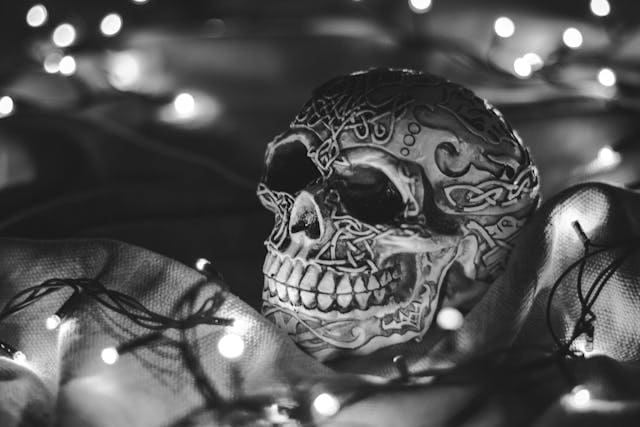Step Back in Time and Reveal Your Previous Self
The digital revolution has brought us incredible ways to manipulate reality, and now AI time-travel photography stands at the forefront of nostalgic technology, allowing people to visualize themselves in different eras with astonishing realism that was impossible just a few short years ago.
How AI Creates Your Past Self Portraits
Modern artificial intelligence has mastered the complex art of transforming contemporary photos into historically accurate representations of how you might have looked in bygone eras, analyzing facial features and applying period-specific characteristics with remarkable precision.
The technology works by mapping key facial landmarks and then applying sophisticated algorithms that understand the aesthetic qualities of different historical periods, from Victorian-era photography techniques to the grainy film quality of 1970s snapshots.
These AI systems don’t simply apply filters but actually reinterpret your features according to the beauty standards, photography limitations, fashion sensibilities, and even common facial expressions typical of each time period.
Popular Time-Travel Photo Apps Taking Over Social Media
The explosion of historical transformation apps has created a new category of viral content, with platforms like TimePortrait, HistoryBooth, and EraSwap dominating social media feeds and accumulating millions of downloads within just weeks of their release.
These applications offer increasingly specialized options, allowing users to see themselves as everything from Renaissance nobility and Wild West settlers to disco-era partiers and 1990s grunge icons, each with historically accurate styling and environmental details.
The social sharing component has proven crucial to these apps’ success, with hashtags like #MyPastLife and #TimePortrait regularly trending as users compare their historical doppelgängers and create elaborate fictional backstories for their alternative timeline selves.
The Science and Technology Behind Digital Age Regression
The technological foundation of these apps relies on generative adversarial networks (GANs) and diffusion models that have been trained on millions of period-specific portraits, paintings, and photographs to understand the subtle visual language of different historical eras.
Developers have collaborated with historians, fashion experts, and photography specialists to ensure the AI accurately represents not just clothing and hairstyles but also the distinctive lighting techniques, pose conventions, and even facial expressions common to specific time periods.
The most sophisticated systems incorporate geographical and ethnic considerations, recognizing that historical appearances varied tremendously across cultures and adjusting the transformations to reflect how a person’s ancestry would have manifested in different historical contexts.
Psychological Appeal of Seeing Your Historical Self
The profound emotional response many people experience when viewing their historical portraits taps into fundamental aspects of human psychology, including our innate curiosity about personal identity and our connection to the broader historical narrative.
Psychologists suggest that seeing ourselves in historical contexts creates a unique form of temporal perspective-taking that strengthens our empathetic connection to history, making distant events feel more personally relevant and easier to conceptualize than abstract dates and facts alone.
The experience often triggers what researchers call “historical imagination,” a cognitive process where we begin to consider how our personalities, values, and life choices might have manifested in radically different social and technological contexts.
Ethical Considerations and Historical Accuracy Debates
Critics have raised important questions about how these apps sometimes romanticize difficult historical periods, potentially glossing over harsh realities like widespread disease, social oppression, and the limited opportunities many people faced based on gender, race, or social class.
Historians have pointed out that while the fashion and aesthetic elements are often impressively accurate, many apps present an idealized version of history that emphasizes beauty and glamour while omitting the physical signs of hardship that would have marked most people’s appearances throughout history.
Some developers have responded to these criticisms by incorporating educational elements into their apps, providing historical context about daily life in different eras and even showing users how environmental factors like nutrition, healthcare access, and physical labor would have affected their appearance.
 Source: Pixabay
Source: PixabayConclusion
Time-travel photography represents a fascinating intersection of cutting-edge AI technology and our deeply human desire to connect with history on a personal level, creating an entirely new way to experience the past through our own faces and identities.
The phenomenal popularity of these applications reveals how technology can satisfy our curiosity about alternative versions of ourselves while simultaneously making historical periods more tangible and emotionally resonant than traditional educational approaches ever could.
As the technology continues to evolve, we can expect even more sophisticated historical transformations that might incorporate animation, voice modification, or even full-body representations that allow us to see not just how we might have looked in different eras, but how we might have moved, spoken, and lived.
Frequently Asked Questions
How accurate are AI time-travel photography apps at depicting historical appearances?
The best apps achieve remarkable accuracy for fashion, photographic style, and general aesthetics, though they typically show idealized versions rather than the harsh realities of historical living conditions.Can these apps show me as a specific historical figure rather than a generic person from that era?
Advanced apps now offer “historical inspiration” modes that can subtly incorporate styling elements from famous figures while maintaining your core facial features.Why do people become so emotionally attached to their historical portraits?
The portraits tap into our natural curiosity about identity and create a personal connection to history, allowing us to imagine alternative life paths in a visceral, visual way.Do these apps work equally well for people of all ethnicities and backgrounds?
Early versions showed significant biases, but leading developers now train their AI on diverse historical images to provide appropriate transformations across different cultural contexts.Are there any privacy concerns with uploading my face to these time-travel photo apps?
Most apps process photos on your device or delete server-side images quickly, but privacy policies vary widely, so users should review terms carefully before uploading their likeness.


